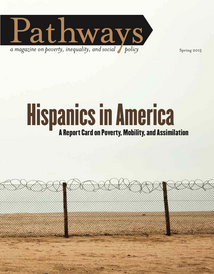Hispanics in America

Even among the most cynical of Americans, there’s probably no avoiding that warm patriotic rush when visiting the Statue of Liberty and reading Emma Lazarus’s sonnet, with its now-famous invitation to “your tired, your poor, your huddled masses.” Although the country’s open-border policy ended long ago, the ideal of a nation that openly welcomes immigrants is still far from empty.
But we’ve arguably reached a moment in history in which the gap between this welcoming ideal and the country’s existing immigration policy seems especially large and glaring. For some Americans (although certainly not all), it has become difficult to reconcile this ideal with immigration policies that, rightly or wrongly, have increasingly focused on deportation. The key policy question of our time, and the one taken on in this issue, is whether this focus on deportation has compromised other policy objectives, especially that of ensuring that immigrants can fully exploit their talents and succeed in the labor market.
